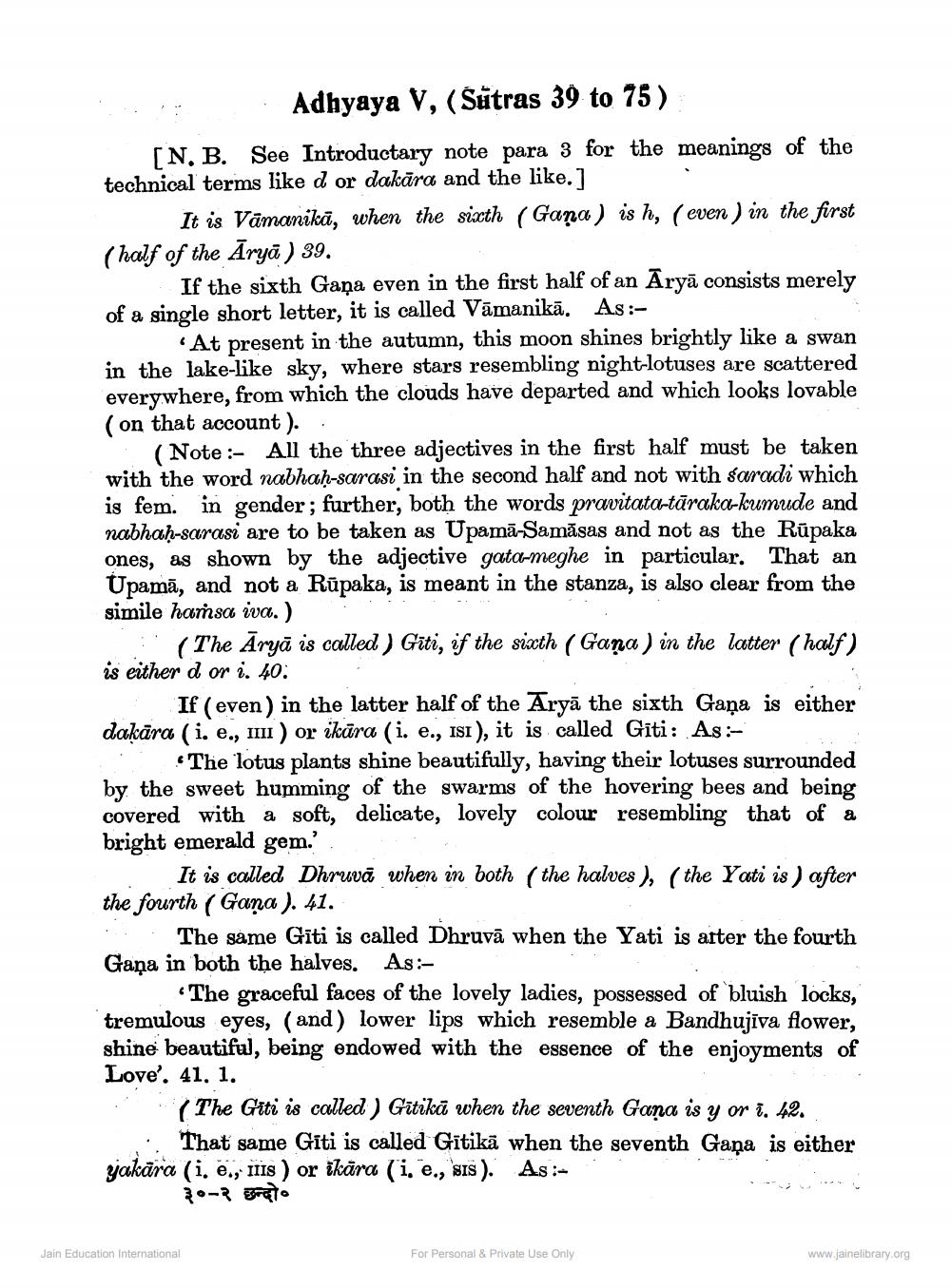________________
Adhyaya V, (Sütras 39 to 75 ) N. B. See Introductary note para 3 for the meanings of the technical terms like d or dakāra and the like.]
It is Vāmanikā, when the sixth ( Gana) is h, (even ) in the first (half of the Āryā) 39.
If the sixth Gaņa even in the first half of an Aryā consists merely of a single short letter, it is called Vāmanikā. As:
At present in the autumn, this moon shines brightly like a swan in the lake-like sky, where stars resembling night-lotuses are scattered everywhere, from which the clouds have departed and which looks lovable (on that account).
(Note: All the three adjectives in the first half must be taken with the word nabhah-sarasi in the second half and not with saradi which is fem. in gender; further, both the words pravitata-tāraka-kumude and nabhah-sarasi are to be taken as Upamā-Samāsas and not as the Rūpaka ones, as shown by the adjective gata-meghe in particular. That an Upamā, and not a Rūpaka, is meant in the stanza, is also clear from the simile harsa iva. )
:'(The Āryā is called ) Giti, if the sixth ( Gana) in the latter (half) is either d or i. 40:
If (even) in the latter half of the Aryā the sixth Gaņa is either dakāra (i. e., IIII) or ikāra (i. e., isi), it is called Gīti: As:
The lotus plants shine beautifully, having their lotuses surrounded by the sweet humming of the swarms of the hovering bees and being covered with a soft, delicate, lovely colour resembling that of a bright emerald gem..
It is called Dhruvā when in both (the halves ), (the Yati is ) after the fourth ( Gana). 41.
The same Gīti is called Dhruvā when the Yati is after the fourth Gaņa in both the halves. As:
The graceful faces of the lovely ladies, possessed of bluish locks, tremulous eyes, (and) lower lips which resemble a Bandhujīva flower, shine beautiful, being endowed with the essence of the enjoyments of Love'. 41. 1. . (The Giti is called ) Gitikā when the seventh Gana is y or i. 42.
... That same Gīti is called Gitikā when the seventh Gaņa is either yakāra (i. e., IIIS ) or ikära (i. e., ss). As :
३.-२ छन्दो
Jain Education International
For Personal & Private Use Only
www.jainelibrary.org




